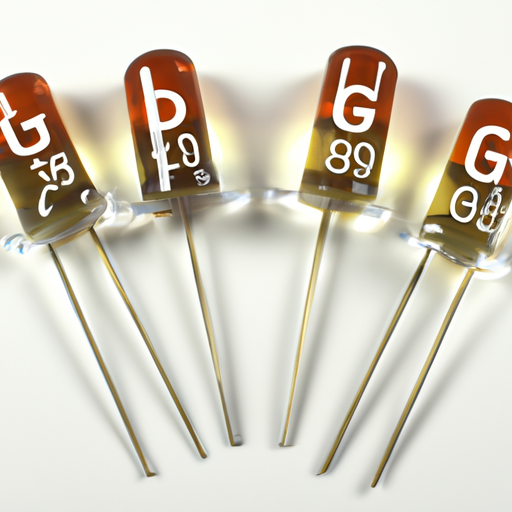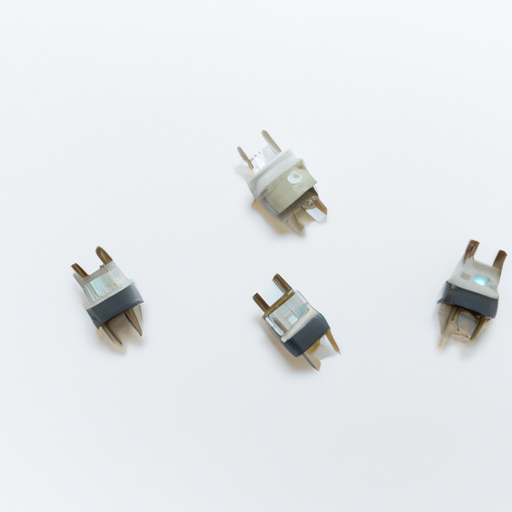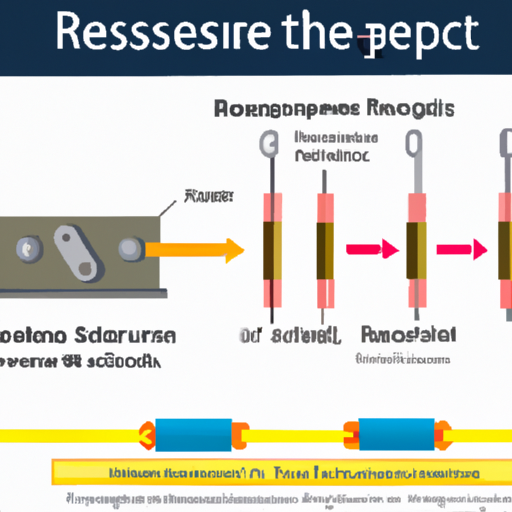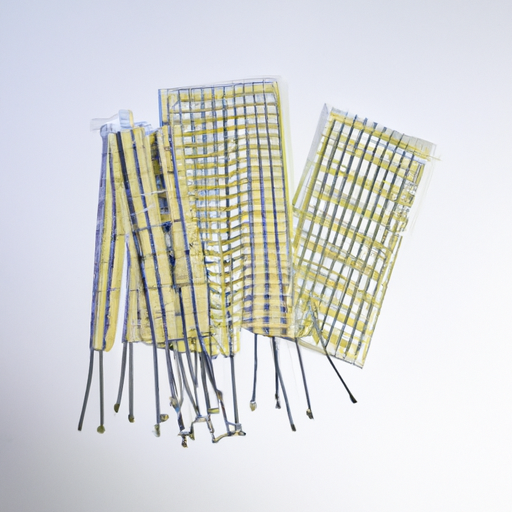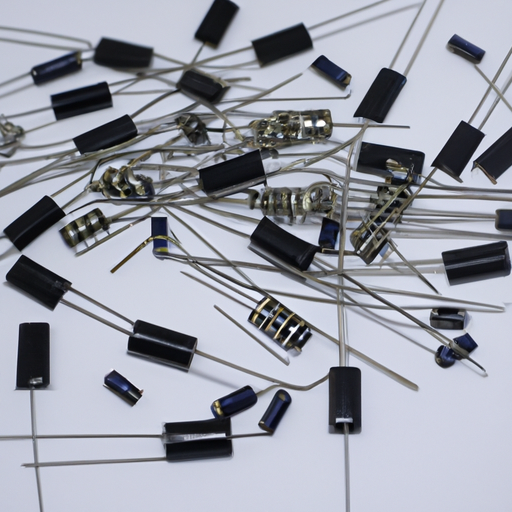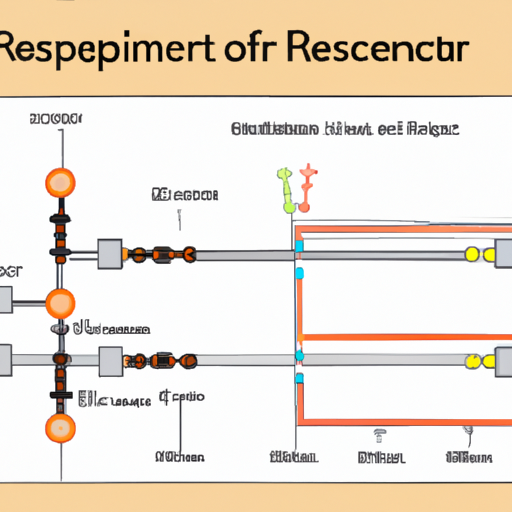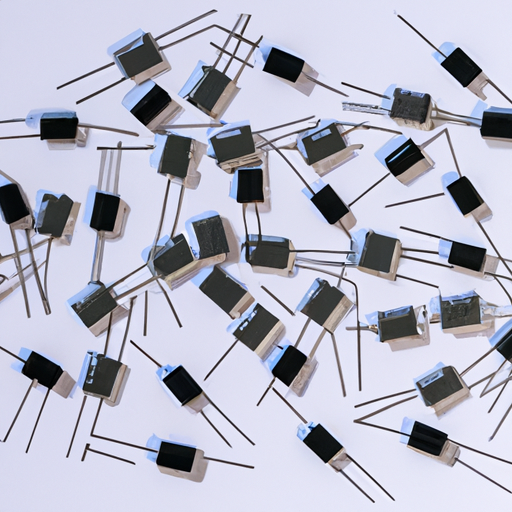Mainstream Glass Glaze Resistor Product Series Parameters
I. Introduction
A. Definition of Glass Glaze Resistors
Glass glaze resistors are passive electronic components that provide resistance to the flow of electric current. They are made by applying a glass-based glaze to a substrate, which is then fired to create a durable and stable resistor. This type of resistor is known for its high reliability and stability, making it a popular choice in various electronic applications.
B. Importance of Resistors in Electronic Circuits
Resistors play a crucial role in electronic circuits by controlling the flow of current, dividing voltages, and protecting sensitive components from excessive current. They are fundamental in ensuring that circuits operate within their specified parameters, thereby enhancing the overall performance and longevity of electronic devices.
C. Overview of the Glass Glaze Resistor Product Series
The glass glaze resistor product series encompasses a range of resistors designed to meet diverse application needs. These resistors are characterized by their unique manufacturing process, which imparts specific electrical and thermal properties, making them suitable for high-performance applications.
II. Types of Glass Glaze Resistors
A. Fixed Resistors
1. Description and Applications
Fixed glass glaze resistors have a predetermined resistance value that does not change. They are widely used in applications where a constant resistance is required, such as in voltage dividers, current limiting, and biasing circuits.
2. Advantages and Disadvantages
**Advantages:** Fixed resistors are simple to use, reliable, and available in a wide range of resistance values.
**Disadvantages:** They lack flexibility, as their resistance cannot be adjusted once manufactured.
B. Variable Resistors
1. Description and Applications
Variable glass glaze resistors, also known as potentiometers or rheostats, allow users to adjust the resistance value. They are commonly used in applications such as volume controls, tuning circuits, and adjustable power supplies.
2. Advantages and Disadvantages
**Advantages:** The ability to adjust resistance makes them versatile for various applications.
**Disadvantages:** They may have lower stability compared to fixed resistors and can be more complex to implement.
C. Specialty Resistors
1. Description and Applications
Specialty glass glaze resistors are designed for specific applications, such as high-voltage or high-power environments. They may include features like enhanced thermal management or specific resistance values tailored for niche markets.
2. Advantages and Disadvantages
**Advantages:** Tailored for specific needs, these resistors can offer superior performance in specialized applications.
**Disadvantages:** They may be more expensive and less readily available than standard resistors.
III. Key Parameters of Glass Glaze Resistors
A. Resistance Value
1. Definition and Measurement
The resistance value of a resistor is measured in ohms (Ω) and indicates how much the resistor opposes the flow of electric current. It is a critical parameter that determines the functionality of the resistor in a circuit.
2. Common Resistance Values in the Market
Glass glaze resistors are available in a wide range of resistance values, typically from a few ohms to several megaohms, catering to various applications.
B. Tolerance
1. Explanation of Tolerance in Resistors
Tolerance refers to the allowable deviation from the specified resistance value. It is expressed as a percentage and indicates the precision of the resistor.
2. Standard Tolerance Levels for Glass Glaze Resistors
Common tolerance levels for glass glaze resistors range from ±1% to ±5%, with some specialty resistors offering tighter tolerances.
C. Power Rating
1. Definition and Importance
The power rating indicates the maximum amount of power a resistor can dissipate without overheating. It is measured in watts (W) and is crucial for ensuring the resistor operates safely within its limits.
2. Typical Power Ratings for Glass Glaze Resistors
Glass glaze resistors typically have power ratings ranging from 0.125W to 5W, depending on their size and application.
D. Temperature Coefficient
1. Explanation of Temperature Coefficient
The temperature coefficient indicates how much the resistance value changes with temperature. It is expressed in parts per million per degree Celsius (ppm/°C).
2. Impact on Performance and Reliability
A low temperature coefficient is desirable as it ensures that the resistor maintains its specified resistance value across a range of temperatures, enhancing reliability in various environments.
E. Voltage Rating
1. Definition and Importance
The voltage rating specifies the maximum voltage that can be applied across the resistor without risking breakdown or failure. It is a critical parameter for ensuring safe operation in circuits.
2. Common Voltage Ratings for Glass Glaze Resistors
Glass glaze resistors typically have voltage ratings ranging from 50V to 500V, depending on their design and intended application.
IV. Manufacturing Process of Glass Glaze Resistors
A. Materials Used
1. Glass Composition
The glass used in glass glaze resistors is typically a mixture of silica, alumina, and other oxides that provide the necessary electrical and thermal properties.
2. Conductive Materials
Conductive materials, such as metal oxides or carbon, are used to create the resistive element within the glass glaze.
B. Production Techniques
1. Screen Printing
The resistive material is often applied to the substrate using screen printing techniques, allowing for precise control over the resistance value.
2. Firing Process
After printing, the resistors are fired in a kiln, which causes the glass to melt and bond with the conductive material, creating a stable and durable resistor.
C. Quality Control Measures
1. Testing Procedures
Manufacturers implement rigorous testing procedures to ensure that each resistor meets specified parameters, including resistance value, tolerance, and power rating.
2. Standards Compliance
Glass glaze resistors are often manufactured in compliance with international standards, ensuring reliability and performance in various applications.
V. Applications of Glass Glaze Resistors
A. Consumer Electronics
Glass glaze resistors are commonly used in consumer electronics, such as televisions, audio equipment, and home appliances, where reliability and performance are critical.
B. Automotive Industry
In the automotive sector, these resistors are used in various applications, including engine control units, sensors, and lighting systems, where they help manage electrical loads.
C. Industrial Equipment
Glass glaze resistors are utilized in industrial equipment for controlling motors, sensors, and other components, ensuring efficient operation in demanding environments.
D. Telecommunications
In telecommunications, these resistors are essential for signal processing and conditioning, helping to maintain signal integrity in communication systems.
E. Medical Devices
Glass glaze resistors are also found in medical devices, where precision and reliability are paramount, such as in diagnostic equipment and monitoring systems.
VI. Advantages of Glass Glaze Resistors
A. High Stability and Reliability
Glass glaze resistors are known for their high stability and reliability, making them suitable for critical applications where performance is essential.
B. Wide Operating Temperature Range
These resistors can operate effectively across a wide temperature range, ensuring consistent performance in various environmental conditions.
C. Resistance to Environmental Factors
Glass glaze resistors are resistant to moisture, dust, and other environmental factors, enhancing their durability and lifespan.
D. Long Lifespan
Due to their robust construction and materials, glass glaze resistors typically have a long operational lifespan, reducing the need for frequent replacements.
VII. Limitations of Glass Glaze Resistors
A. Size and Form Factor
One limitation of glass glaze resistors is their size, which can be larger than other types of resistors, potentially impacting circuit design.
B. Cost Considerations
Glass glaze resistors can be more expensive than other resistor types, which may be a consideration for cost-sensitive applications.
C. Limited Availability of Certain Specifications
Certain specialized glass glaze resistors may have limited availability, making it challenging to source specific resistance values or power ratings.
VIII. Future Trends in Glass Glaze Resistor Technology
A. Innovations in Materials and Manufacturing
Advancements in materials science and manufacturing techniques are expected to enhance the performance and reduce the costs of glass glaze resistors.
B. Increasing Demand in Emerging Technologies
As technology evolves, the demand for high-performance resistors in emerging fields such as renewable energy, electric vehicles, and IoT devices is likely to grow.
C. Environmental Considerations and Sustainability
Manufacturers are increasingly focusing on sustainable practices, including the use of eco-friendly materials and processes in the production of glass glaze resistors.
IX. Conclusion
A. Summary of Key Points
Glass glaze resistors are essential components in modern electronics, offering high stability, reliability, and versatility across various applications. Understanding their parameters, types, and manufacturing processes is crucial for selecting the right resistor for specific needs.
B. The Role of Glass Glaze Resistors in Modern Electronics
As technology continues to advance, glass glaze resistors will play a vital role in ensuring the performance and reliability of electronic devices, from consumer products to critical industrial applications.
C. Final Thoughts on Selection and Application
When selecting glass glaze resistors, it is essential to consider factors such as resistance value, tolerance, power rating, and application requirements to ensure optimal performance and reliability.
X. References
A. Academic Journals
- Journal of Electronic Materials
- IEEE Transactions on Components, Packaging and Manufacturing Technology
B. Industry Reports
- Resistor Market Analysis Report
- Global Electronic Components Market Trends
C. Manufacturer Specifications and Datasheets
- Manufacturer A: Glass Glaze Resistor Datasheet
- Manufacturer B: Technical Specifications for Glass Glaze Resistors
This blog post provides a comprehensive overview of mainstream glass glaze resistor product series parameters, highlighting their importance, applications, and future trends in the electronics industry.

